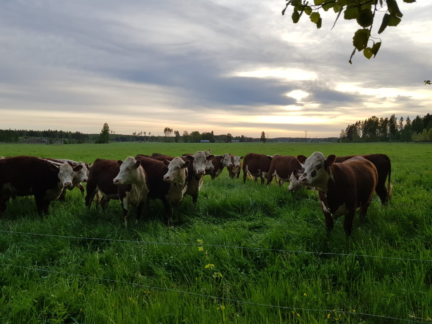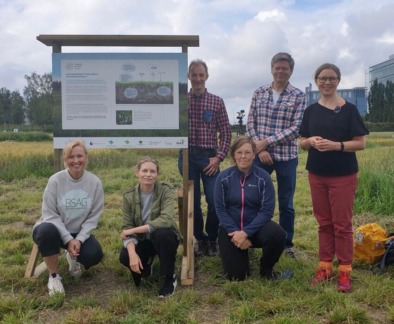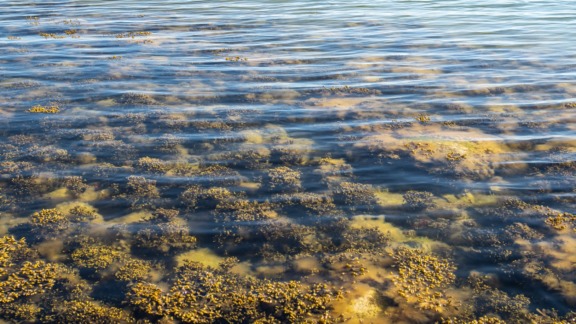HAVSMANUALEN 2 & 3
Carbon Action
Part of the carbon and nutrients in soils runs off to waters, in dissolved and particulate forms. As the soils become less fertile, the waters get eutrophied and release more greenhouse gases into the atmosphere. In the project Havsmanualen 2, an operating model was developed to assess the loading status of coastal waters. In the project Havsmanualen 3 (2021–), the novel model is used as a cost-efficient tool for environmental management along the entire coast of Västra Nyland.
Official name
Havsmanualen 2 and 3 – From Scientific Knowledge to Solid Actions
Duration
2018-
Persons in charge
Matias Scheinin, matias@scheinin.fi
Consortium
Department of Environmental Protection, City of Hanko
Funder
The Bergsrådinnan Sophie von Julin Foundation, the Programme to Enhance the Effectiveness of Water Protection (Ministry of the Environment)
Determining the loading status of coastal waters
A substantial part of the carbon and nutrients in soils runs off to waters, in dissolved and particulate forms. As the soils become less fertile, the waters get eutrophied and release more greenhouse gases into the atmosphere. This deteriorates ecosystem structure, function and services, in the terrestrial and in the aquatic realms, alike. Among other issues, this environmental degradation is expressed in biodiversity patterns, economical profitability and the capacity to bind atmospheric carbon. In aquatic environments, the concrete manifestations of terrestrial loading include elevated organic content, turbidity and microalgal biomass, as well as acidification, oxygen deficiency and increased concentrations of carbon dioxide and methane. By measuring these indicators and relating their values to the surrounding conditions, the loading status of waters can be quantified through the environmental consequences. This approach generates a pragmatic set of premises for environmental solutions that are mutually beneficial for land use, water bodies and the climate.
Havsmanualen 2
The project Havsmanualen 2 (2018–20) formed the foundations for a novel model for determining the loading status of coastal waters with high spatiotemporal resolution. The model builds upon simultaneous registration of data on a comprehensive suite of two sorts of variables, those that are indicative of loading and those that summarize the physical circumstances. Continuous underway measurements of these variables are used for generating a data set for defining detailed and environment-specific reference values for each indicator. By focusing on the anomalies, or on the deviations from the expected, bias from confounding variables such as freshwater input and mixing can be handled, resulting in an adequate and spatiotemporally scalable picture of the actual loading status. This Coastrider method has been used in the coastal waters of the cities of Hanko and Raseborg since 2018, for instance, to localize hotspots of carbon and nutrient loading, to target subsequent countermeasures and to evaluate their efficiency. The method thus complements the application of remote sensing and model-based tools for similar purposes.
Havsmanualen 3
In the project Havsmanualen 3 (2021–), the novel model will be used as a cost-efficient tool for environmental management along the entire coast of Västra Nyland. The project will be focused on topical problems, specifically diffuse loading and especially the role of direct runoff. Correspondingly, the measurements will be concentrated on the most relevant dimensions and scales, that is, on variation in the status of surface waters along the coast, along the year and among years. On top of environmental planning, the collected information will be applied in evaluating how anthropogenic influence and other changes in the waters and the surrounding drainage areas will impact the environment. In addition to the concrete applications, the data from the project will be used in various academic purposes, especially those regarding the flow of carbon between the land, the coastal waters and the atmosphere. The project will thus support the Carbon Action platform in its endeavor towards systemic change both at the practical and at the concrete level
By collaborating closely with universities, officials and NGOs, we produce novel scientific knowledge and apply it at a concrete level by developing new methodology and tailoring information according to the needs of environmental management.
Matias Scheinin, City of Hanko
PROJECT PARTNERS



